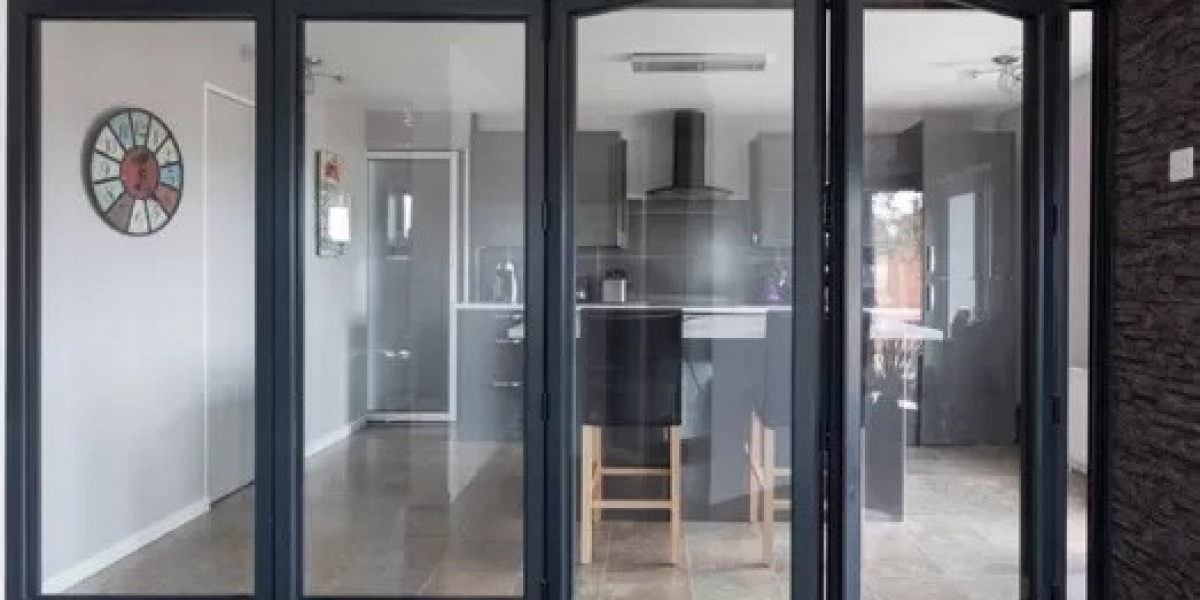Understanding and Repairing Bifold Door Brackets: A Comprehensive Guide
bifold door repair cost doors are a versatile and space-saving service for both property and commercial areas. They are commonly used in closets, pantries, and room dividers due to their capability to fold neatly and take up minimal area when open. Nevertheless, like any mechanical system, Bifold Door Repairman doors can experience wear and tear in time, especially at the hinges and brackets. This short article looks into the importance of bifold door brackets, typical concerns that occur, and step-by-step guidelines for repairing them.
The Importance of Bifold Door Brackets
Bifold door brackets are vital elements that support the weight of the door panels and ensure smooth operation. These brackets are normally connected to the top and bottom of the door frame and are accountable for guiding the doors as they fold and unfold. Without appropriately operating brackets, bifold doors can end up being misaligned, tough to open and close, and even fall off the track.
Typical Issues with Bifold Door Brackets
- Loose or Damaged Brackets: Over time, the screws that hold the brackets in place can loosen up, causing the doors to sag or end up being misaligned.
- Worn-Out Hinges: The hinges within the brackets can wear, leading to creaking noises and minimized performance.
- Misaligned Tracks: If the tracks are not appropriately lined up, the brackets might not work correctly, triggering the doors to bind or stick.
- Deterioration and Rust: Exposure to wetness can trigger brackets to rust, which can deteriorate their structural stability and cause failure.
Tools and Materials Needed for Repair
Before you begin the repair procedure, gather the following tools and products:
- Screwdriver (Phillips and flathead)
- Drill and drill bits
- Adjustable wrench
- Lubricating oil (such as WD-40)
- Replacement brackets (if necessary)
- Sandpaper (for rust elimination)
- Paint or rust-resistant coating (if required)
Step-by-Step Guide to Repairing Bifold Door Brackets
Examine the Brackets and Tracks
- Step 1: Open the bifold doors fully and check the brackets and tracks for any visible damage, loose screws, or misalignment.
- Action 2: Check the hinges within the brackets for wear and tear. Look for indications of rust, creaking, or tightness.
Tighten Loose Screws
- Step 1: Use a screwdriver to tighten up all screws on the brackets. Start from the top brackets and work your method to the bottom.
- Step 2: If any screws are stripped or damaged, remove them and utilize a drill to produce brand-new holes. Replace the screws with new ones.
Lube the Hinges
- Action 1: Apply a couple of drops of lubricating oil to the hinges within the brackets. Move the doors backward and forward to disperse the oil uniformly.
- Step 2: Wipe away any excess oil with a tidy cloth to prevent it from dripping onto the floor or other surfaces.
Align the Tracks
- Action 1: If the tracks are misaligned, use an adjustable wrench to loosen the screws that hold the track in place.
- Step 2: Gently change the track to ensure it is level and directly. Retighten the screws to secure the track in its new position.
Replace Damaged Brackets
- Step 1: If any brackets are damaged beyond repair, eliminate them by loosening the screws that hold them in place.
- Action 2: Install the new brackets in the very same position, guaranteeing they are safely fastened with new screws.
Get Rid Of Rust and Apply Protective Coating
- Action 1: Use sandpaper to remove any rust from the brackets and tracks. Sand till the surface is smooth and free of rust.
- Step 2: Apply a rust-resistant finishing or paint to the brackets and tracks to prevent future deterioration.
Check the Doors

- Action 1: Once all repairs are complete, evaluate the bifold door trouble doors by opening and closing them numerous times. Guarantee they move efficiently and are effectively lined up.
- Action 2: Make any final adjustments as required to make sure optimum performance.
FAQs
Q: How typically should I inspect and keep my bifold door brackets?A: It is recommended to inspect and maintain your bifold door vertical adjustment door brackets a minimum of when a year. However, if you see any signs of wear or malfunction, it is best to address the issue immediately to avoid more damage.
Q: Can I oil the hinges with any kind of oil?A: While any type of oil can supply some lubrication, it is best to utilize a high-quality lubricating oil such as WD-40. This kind of oil is particularly developed to decrease friction and prevent rust, making it ideal for bifold door hinges.
Q: What should I do if the tracks are bent or damaged?A: If the tracks are bent or damaged, it might be essential to replace them. Seek advice from the maker's directions or a professional for assistance on how to replace the tracks.
Q: Can I paint over rust on the brackets?A: It is not advised to paint over rust. Rust can continue to spread out under the paint, leading to further damage. Constantly eliminate rust with sandpaper before using a protective covering or paint.
Q: Are there any preventive steps I can require to extend the life of my bifold door brackets?A: Yes, regular maintenance is crucial. Keep the brackets and tracks clean and without particles. Lubricate the hinges frequently, and examine for loose screws or indications of wear. Resolve any problems promptly to avoid more major issues.
Bifold door brackets are vital for the smooth operation and longevity of your bifold doors. By comprehending common problems and following the steps outlined in this guide, you can effectively repair and maintain your bifold door rehabilitate door brackets. Regular maintenance and prompt attention to any signs of wear will guarantee that your bifold doors continue to work effectively for many years to come.



